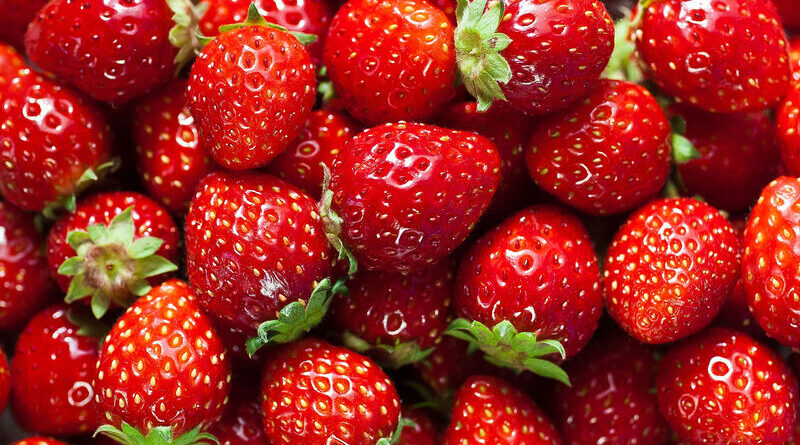Is Strawberry a Fruit? Discover the Botanical and Culinary Truth
Although the answer to the question “Is Strawberry a Fruit?” may appear simple, it goes into great detail on both botanical classification and culinary knowledge. In this piece, we disentangle the mysteries surrounding the strawberry’s identity by examining its botanical traits as well as its role in our common understanding of fruits. You’ll have a greater respect for the strawberry and a better knowledge of its actual nature by the time you’re done.
Taxonomical Classification of Strawberries
Scientifically speaking, strawberries belong to the Rosaceae family and are grouped under the genus Fragaria. They are known for their wide range of species and cultivated forms.
There are wild variations such as Fragaria vesca, but the most often cultivated species is Fragaria × ananassa. A fundamental knowledge of strawberries’ botanical identity and evolutionary ties within the plant kingdom can be gained by comprehending their taxonomy.
Characteristics of Fruits in Botanical Terms
In terms of botany, fruits are the fully developed ovaries of blooming plants that result from pollination and fertilization of the ovaries. They emerge from the flower’s ovary and carry seeds.
It is necessary to recognize the origin, structural elements, mechanisms of seed distribution, developmental process, and types of botanical fruits to comprehend their properties. This information serves as a basis for determining if strawberries meet the definition of a fruit.
Scientific Classification of Strawberries
The plant kingdom Plantae, division Magnoliophyta (Angiosperms), class Magnoliopsida (Dicotyledons), order Rosales, and family Rosaceae are home to strawberries, scientifically known as Fragaria × ananassa.
These are hybrid species that are the product of the union of Fragaria virginiana and Fragaria chiloensis. Gaining knowledge of their scientific classification can help one understand their genetic variety and evolutionary history within the plant kingdom.
Clarifying the Distinction Between Strawberry Fruit and Vegetables
It’s common to find it difficult to distinguish between fruits and vegetables in both the botanical and culinary domains.
According to botany, fruits are made from a flower’s ovary and contain seeds. But vegetables are made up of several edible plant elements such as roots, stems, and leaves.
In contrast to botanical classification, fruits and vegetables may be categorized more according to flavor and application in culinary contexts.
Clarifying the distinctions between fruits and vegetables is the goal of this section. Which also serves as a preamble to a more in-depth analysis of the botanical categorization of strawberries.
Botanical Properties of Strawberries
Scientifically speaking, strawberries belong to the genus Fragaria and have special botanical characteristics. Strawberries are an accessory fruit that grows from the receptacle instead of the ovary. The genuine seeds are found in the little achenes that are present on the surface of the fruit. This unique reproductive organ facilitates the spread of seeds.
Furthermore, the intense red hue, delightful scent, and juicy texture of strawberries are evolutionary adaptations meant to draw animals and aid in the spread of their seeds. Gaining knowledge of these botanical characteristics helps us understand the ecological relevance and evolutionary significance of strawberries.
Culinary and Everyday Understanding of Fruits
Fruits are prized for their inherent sweetness and adaptability in kitchens all across the world. Fruits are used in many culinary creations, from light snacks to decadent desserts.
Because of their vivid color and luscious flavor, strawberries are treasured in culinary traditions. Strawberries are praised for their culinary appeal whether they are eaten raw, blended into smoothies, or used in rich pastries. Fruits are symbolic of abundance and happiness outside of the kitchen and are frequently included in customs and celebrations.
Gaining knowledge about the every day and culinary uses of fruits provides essential background information when investigating their nutritional value and botanical classification.
Conclusion
To sum up, the investigation into whether strawberries are considered strawberry fruit goes well beyond classification in botany and culinary knowledge. Through an analysis of their botanical characteristics and their place in culinary customs, strawberries’ intricacy becomes clear to us. Strawberries are categorized as an accessory fruit in science. But their distinctive reproductive system and culinary diversity make them stand out.
Our understanding of their evolutionary history and ecological significance is enhanced by our knowledge of their botanical characteristics. Furthermore, appreciating their culinary significance highlights their significance in a variety of cuisines and cultural events.
This investigation not only provides an answer to the question of whether strawberries are fruits, but it also helps us appreciate their complex character and importance to both human civilization and the natural environment.
You Can Read More About Strawberry
Make Easy Strawberry Banana Pudding Recipe
Ultimate Breakfast: Is Strawberry Cereal Perfect Choice?
Craving Sweet Delight? Ultimate Strawberry Kit Kat Cake Recipe
